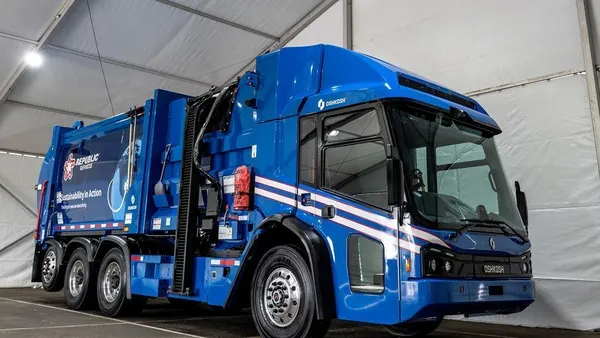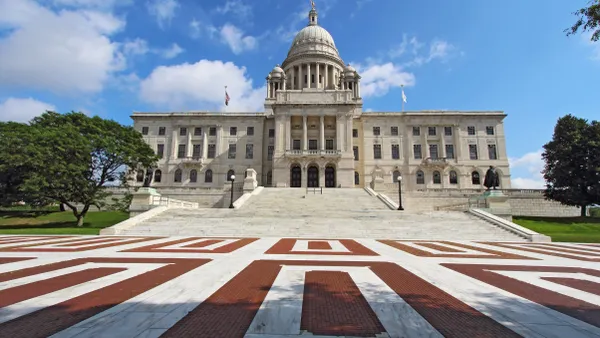- Economic outlook: During Stericycle’s Thursday earnings call, CEO Cindy Miller said the company reached a “major milestone” by achieving its debt leverage ratio goal of being under 3.0. The company ended Q2 with a ratio of 2.7, its lowest leverage since 2015. “The strengthening of our balance sheets and debt leverage puts us in a position to optimize our debt structure and will afford us greater investment flexibility in the future,” Miller said. She also reaffirmed the company’s full-year guidance.
- Revenue growth: Stericycle also reported its 10th consecutive quarter of overall organic revenue growth, experiencing 2.3% growth for Q2. Its North American regulated waste and compliance services sector increased 4.8% year over year, mainly due to pricing, stability from existing contracts, new customer pricing and assorted surcharges, said CFO Janet Zelenka. However, secure information destruction services organic revenues in the North American market declined 1.6% year over year, mainly due to the decline in fuel surcharges.
- Recent divestitures: Stericycle continues to divest from more of its international companies. In Q2, the company earned about $84 million when it divested from regulated waste companies in Brazil and Korea and secure information destruction businesses in Singapore and Australia. About $50 million of the proceeds were used to pay down the company’s term loan, with the remainder applied to its revolver, Zelenka said. Not counted in the $84 million was a dental business in the Netherlands, which Stericycle divested earlier this week, and a SID business in the United Arab Emirates it plans to divest in the third quarter, Miller said.
- Recycling revenues: Recycled paper revenues dipped about 4% in Q2, a loss of about $8.1 million. Lower shredded office paper pricing and lower tonnage contributed to the decrease, Zelenka said. Stericycle updated its recycling recovery surcharge in June to counteract some of the loss, and the company has been working to add SOP surcharges to new customer service contracts. “As we continue to renew contracts and win new business, the surcharges are now included in approximately 60% of North America customer contracts,” which is expected to offset about 60% of paper price volatility, Miller said.
- Incinerator update: Stericycle is still in the process of building and testing its regulated medical waste incinerator in Nevada, which the company had originally planned to open later this year. The construction phase of the project is now expected to be complete sometime in the first half of 2024, Miller said. After construction is finished, the incinerator will move to the testing phase, which includes a regulatory review. The project accounts for about one-third of the 2023 capital expenditure budget, Zelenka said. Stericycle is also working on other incinerator improvement projects expected to be completed in Q3.
- Fleet orders: Stericycle is finally shaking off the long-term effects of supply chain disruptions in 2022 that delayed new vehicle shipments. At the end of Q2, Stericycle had been able to fill about 80% of its fleet order, and it expects to receive the remaining vehicle by late summer. The company is currently renting out numerous vehicles and is paying “exponentially high” return fees. Zelenka expects the fuel savings and driver productivity the company gains from putting new vehicles on the road will help even out some of those unexpected rental return fees.

Stericycle meets debt leverage ratio goal, maintains 2023 guidance
The company also continues to divest from international businesses and says it’s moving toward “greater investment flexibility” in the future.

Recommended Reading
- Q2 earnings results for major waste and recycling companies By Waste Dive Staff • Updated Aug. 10, 2023
- Stericycle touts revenue improvements, previews 2023 capital investments By Megan Quinn • Feb. 24, 2023












